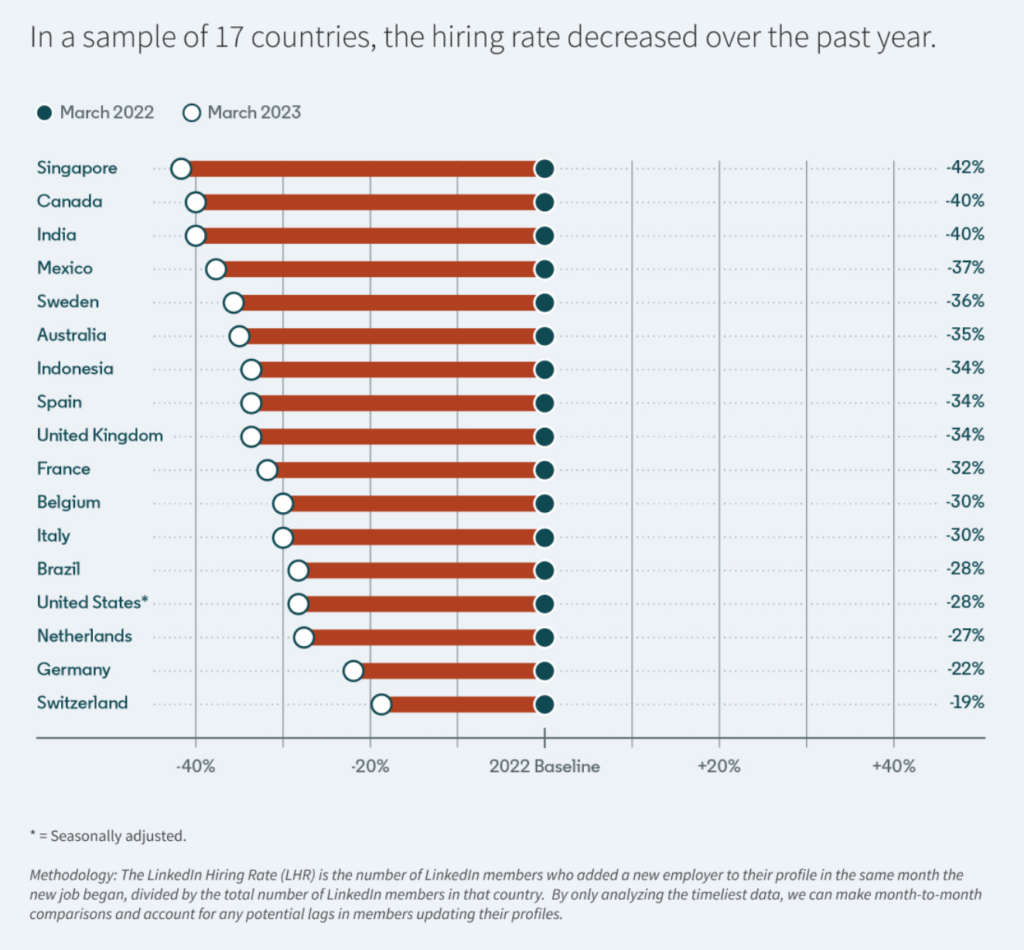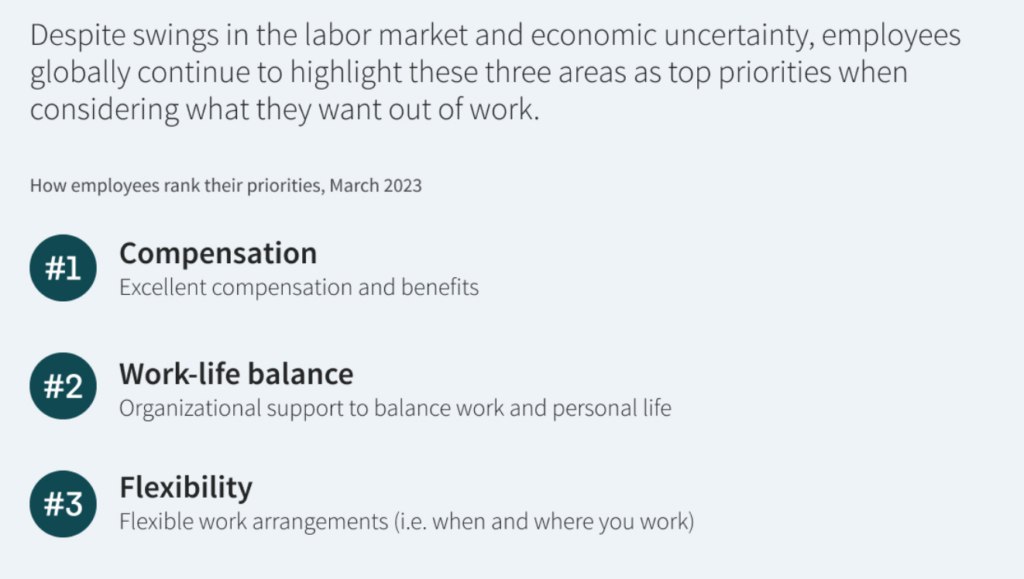Some of you might have noticed it’s been a while since I’ve posted. I was writing my second book, The Talent Fix, Vol. 2! The new book should be released in April 2024, and the plan is to launch it at the SHRM Talent Conference in Las Vegas!
Last week, I was in Nashville at RecFest USA – the first time RecFest has come to America. RecFest is a large outdoor recruiting festival, and it’s such a fun and interactive event. I can’t wait for next year’s event, and I’ll definitely be taking my full team to Nashville to experience RecFest!
What was the tea coming out of RecFest?
- Recruiters and Recruiting leaders out of work – This was a little strange for me to hear because in reality, this is very industry-specific. The tech industry has gotten hit hard with layoffs, and TA teams are some of the first to go. At the same time, many of those companies had TA teams that were way too big for the hiring they were doing. So, some of this is simple right-sizing. The problem is, you had recruiters making $150-$200K, and they honestly believe they are worth that much. They aren’t. The downturn is hard on people who were making monopoly money and not really performing at that level.
- AI was all the talk, but it was mostly talk. My friend Matt Charney says roughly 69% of TA teams currently do not have AI in their recruiting tech stack. I think some of their vendors would disagree with this as most vendors are utilizing machine learning, but the tech nerds would argue this isn’t really AI! AI will transform how we recruit talent, but this will be an evolution that will take years, and most of the true AI will be buried in your tech in a way you won’t even notice most of the tactical pieces of recruiting going away until one day you wake up and we no longer do tactical work in recruiting.
- There’s a major Candidate and Employer Disconnect. I ran across a GenZ/Millennial candidate panel, and it was laughable listening to it. Candidates complain that they get ghosted and don’t get great feedback. They also are unapologetic about applying for 300 positions in 30 minutes. TA pros complain about being ghosted and do not understand why candidates don’t reply to their spam emails. The Talent Board still shows that 47% of candidates still don’t even get dispositioned for the positions they apply for. Both sides feel wronged, and neither side is willing to take any responsibility for the behaviors. All this means is that the candidates who act professional and the TA pros who act professional will stand out and be rare in today’s world.
- There is still a lot of talk about DEI, but the talk is changing. If we are honest with each other, the entire DEI talk began as simply we need more black faces in our organization. That started probably twenty years ago. Since then, the world has changed a bunch, and the conversation amongst HR and TA pros has evolved, but in reality, most of the C-suite still sees this as counting faces. The faces might have expanded to include more, but we still are stuck in so many areas. We still are not willing to use data around DEI and have real conversations about what is possible and what is just posturing.
- Everyone is a unique and special butterfly. Which, for all intents and purposes, makes no one unique and special. We now have Trans Recruiters and Nero-divergent Recruiters and Furry Recruiters and fill in the blank of whatever you are recruiter. If you are a Gay Recruiter today, sorry, you’re just a recruiter! Oh wait, that’s right, we are all just recruiters! Honestly, the next evolution is this will be my AI telling me what kind of recruiter they are! Just fucking recruit! Okay, I say this, but honestly, this is also the solution to more inclusive recruiting. Want more female engineers? Hire females to recruit engineers. Want more Black Sales Reps? Hire Black Recruiters to recruit your sales reps. Want more military hires? Hire former military professionals and teach them how to recruit. We aren’t launching spy balloons, people. This isn’t that hard!
- Technology recruiting vendors are currently struggling to make their numbers. So, why should you care? I love to get a bargain, and right now you can get a bargain! If you’re super smart, you’ll sign a multi-year contract and lock that bargain in for when it will no longer be a bargain! Right now, you have some major negotiating power if you are in the market for technology or if you’re getting pushed to sign your next contract. Vendors are super competitive with their pricing at this moment.
That’s what I got today.
Moving forward for the rest of the year, I’m going to be hitting the reviews and updates hard on the recruiting technology market. There’s a lot of stuff being developed and the space is moving really fast again with AI development, so my hope is I can help keep you all informed on what’s new and hot and worth your money!
Welcome back!


